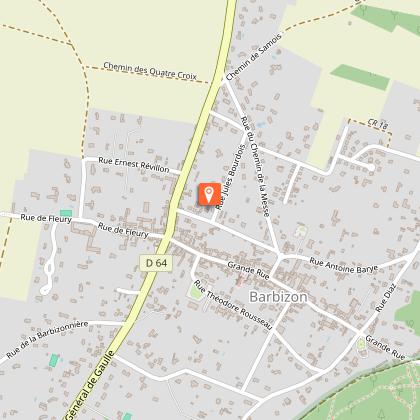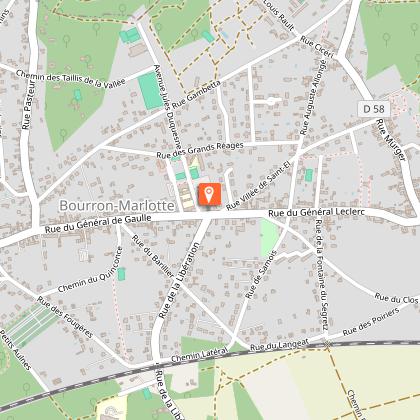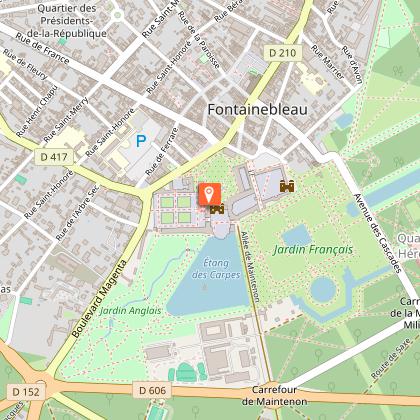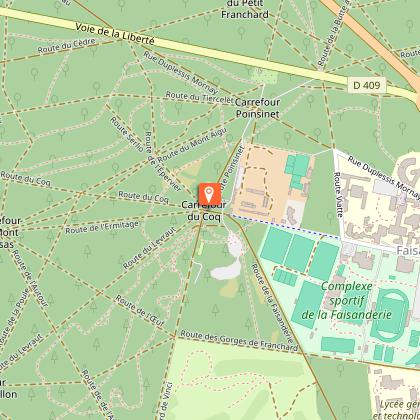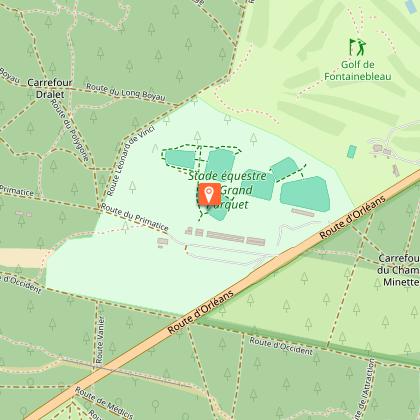Alert
Alerts
Type of practice
Racing biking
Presentation
Map
Steps
Points of interest
Cirkwi brief's
Ratings and reviews
See around
The Seine by Bike - From Bois-le-Roi to Moret-sur-Loing

Credit : SMA
The Cirkwi brief
Explore the Seine by Bike: Art and Nature's Harmony
Embarking on a journey from Bois-le-Roi to Moret-sur-Loing will captivate your senses, courtesy of Seine et Marne Attractivité. This cycling route is not just a passage; it's an experience woven through the fabric of nature and history, connecting the tranquil Seine riverside to the artistic aura of the Impressionist village, Barbizon. Imagine cycling through the enchanting Forest of Fontainebleau, uncovering scenic "windows" amidst shaded clearings—an ideal haven for relaxation. This journey is perfect for those seeking to absorb the subtle grandeur of nature while tracing the footsteps of renowned painters who once sought inspiration in these landscapes.
Your Essential Route Overview
Dive into the specifics: Spanning approximately 27.9 kilometers, this journey offers a blend of modest inclines and scenic flat stretches. With an altitude ranging from 41 to a modest peak of 78 meters, the route promises a moderately easy ride, suitable for both novices and experienced cyclists. The cumulative elevation gain is roughly between 193 to 200 meters, indicating a few gentle challenges along the way. This balance of ease and engagement makes the path an excellent choice for anyone looking to appreciate the picturesque Seine-et-Marne area on two wheels.
Seasonal Tips for Cyclists
Regardless of the season, preparation is key for a delightful experience. In spring and summer, light clothing and sunscreen are essentials, as the lush landscapes come alive, albeit with more visitors. The cooler months of autumn present an opportunity to enjoy the changing foliage with fewer crowds, though warmer attire and possibly rain gear become necessities. Always check your bicycle's condition before setting off and carry water, especially during warmer days. For optimal safety, follow marked trails and consider using a helmet at all times.
A Journey Through History and Art
Bois-le-Roi to Moret-sur-Loing is not just a geographic route; it's a passage through time and culture. This area, nestled within the broader Seine-et-Marne region, holds a pivotal place in French history. The proximity to the Forest of Fontainebleau situates it as a critical juncture between natural beauty and royal heritage. Barbizon, meanwhile, stands as a testament to the 19th-century art movement, with its painters forging a path that would lead to Impressionism. Exploring this region offers a unique opportunity to intersect with the narratives that have shaped not simply the landscape, but also the cultural fabric of France.
Ideal Times and Climate Insights
The region's temperate climate promises enjoyable cycling for most of the year. However, the best periods to embark on this adventure fall between late spring and early autumn. During these months, temperatures are pleasant, and the likelihood of rainfall is lower, offering clear skies and comfortable journey conditions. Winter rides, while still possible, might require more preparation due to cooler temperatures and the potential for wet conditions. Choosing the right time for your visit can significantly enhance the experience, providing you with scenic vistas and an enjoyable climate.
Embarking on a journey from Bois-le-Roi to Moret-sur-Loing will captivate your senses, courtesy of Seine et Marne Attractivité. This cycling route is not just a passage; it's an experience woven through the fabric of nature and history, connecting the tranquil Seine riverside to the artistic aura of the Impressionist village, Barbizon. Imagine cycling through the enchanting Forest of Fontainebleau, uncovering scenic "windows" amidst shaded clearings—an ideal haven for relaxation. This journey is perfect for those seeking to absorb the subtle grandeur of nature while tracing the footsteps of renowned painters who once sought inspiration in these landscapes.
Your Essential Route Overview
Dive into the specifics: Spanning approximately 27.9 kilometers, this journey offers a blend of modest inclines and scenic flat stretches. With an altitude ranging from 41 to a modest peak of 78 meters, the route promises a moderately easy ride, suitable for both novices and experienced cyclists. The cumulative elevation gain is roughly between 193 to 200 meters, indicating a few gentle challenges along the way. This balance of ease and engagement makes the path an excellent choice for anyone looking to appreciate the picturesque Seine-et-Marne area on two wheels.
Seasonal Tips for Cyclists
Regardless of the season, preparation is key for a delightful experience. In spring and summer, light clothing and sunscreen are essentials, as the lush landscapes come alive, albeit with more visitors. The cooler months of autumn present an opportunity to enjoy the changing foliage with fewer crowds, though warmer attire and possibly rain gear become necessities. Always check your bicycle's condition before setting off and carry water, especially during warmer days. For optimal safety, follow marked trails and consider using a helmet at all times.
A Journey Through History and Art
Bois-le-Roi to Moret-sur-Loing is not just a geographic route; it's a passage through time and culture. This area, nestled within the broader Seine-et-Marne region, holds a pivotal place in French history. The proximity to the Forest of Fontainebleau situates it as a critical juncture between natural beauty and royal heritage. Barbizon, meanwhile, stands as a testament to the 19th-century art movement, with its painters forging a path that would lead to Impressionism. Exploring this region offers a unique opportunity to intersect with the narratives that have shaped not simply the landscape, but also the cultural fabric of France.
Ideal Times and Climate Insights
The region's temperate climate promises enjoyable cycling for most of the year. However, the best periods to embark on this adventure fall between late spring and early autumn. During these months, temperatures are pleasant, and the likelihood of rainfall is lower, offering clear skies and comfortable journey conditions. Winter rides, while still possible, might require more preparation due to cooler temperatures and the potential for wet conditions. Choosing the right time for your visit can significantly enhance the experience, providing you with scenic vistas and an enjoyable climate.
Automatically generated.
IGN cards

2517SB - MONTEREAU-FAULT-YONNE MORET-SUR-LOING
Editor : IGN
Collection : TOP 25 ET SÉRIE BLEUE
Scale : 1:25 000
13.90€
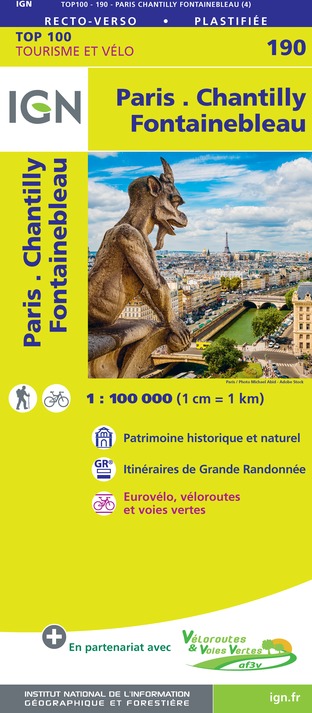
190 PARIS CHANTILLY FONTAINEBLEAU
Editor : IGN
Collection : TOP 100
Scale : 1:100 000
8.40€

119 PARIS SENS PNR DU GÂTINAIS FRANÇAIS
Editor : IGN
Collection : TOP 100
Scale : 1:100 000
8.40€

D77 SEINE-ET-MARNE
Editor : IGN
Collection : CARTES DÉPARTEMENTALES IGN
Scale : 1:150 000
5.90€

D75-95 ÎLE-DE-FRANCE OUEST
Editor : IGN
Collection : CARTES DÉPARTEMENTALES IGN
Scale : 1:150 000
5.90€

D58-D89 NIÈVRE YONNE
Editor : IGN
Collection : CARTES DÉPARTEMENTALES IGN
Scale : 1:150 000
5.90€
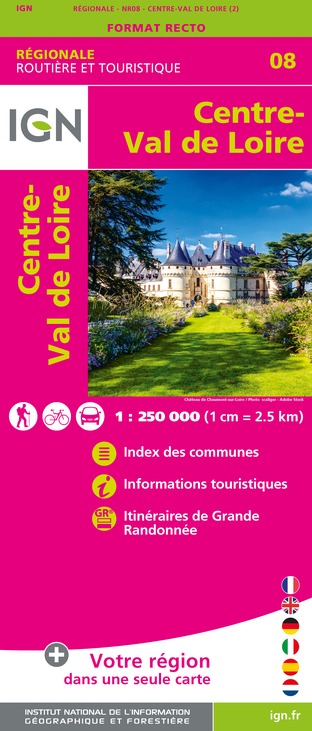
NR08 CENTRE-VAL DE LOIRE
Editor : IGN
Collection : CARTES RÉGIONALES IGN
Scale : 1:250 000
6.80€

NR09 BOURGOGNE FRANCHE-COMTÉ
Editor : IGN
Collection : CARTES RÉGIONALES IGN
Scale : 1:250 000
6.80€
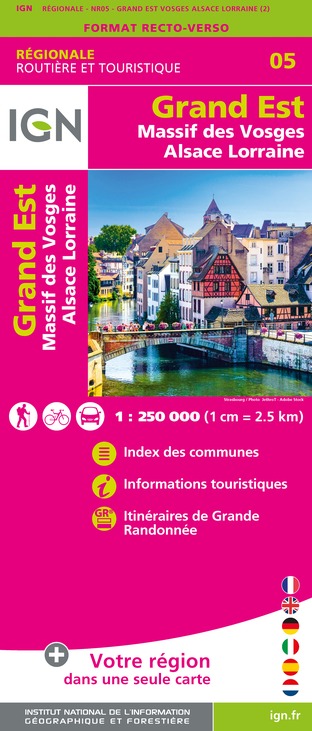
NR05 GRAND EST RECTO/VERSO MASSIF DES VOSGES ALSACE LORRAINE
Editor : IGN
Collection : CARTES RÉGIONALES IGN
Scale : 1:250 000
6.80€

NR04 - GRAND EST RECTO/VERSO ARDENNE CHAMPAGNE
Editor : IGN
Collection : CARTES RÉGIONALES IGN
Scale : 1:250 000
6.80€

NR03 ÍLE DE FRANCE
Editor : IGN
Collection : CARTES RÉGIONALES IGN
Scale : 1:250 000
6.80€
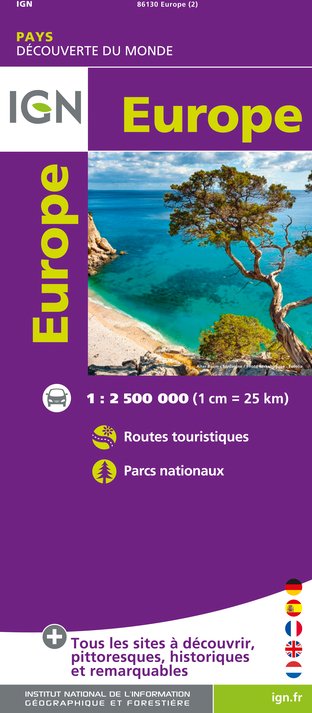
EUROPE
Editor : IGN
Collection : DÉCOUVERTE DES PAYS DU MONDE IGN
Scale : 1:2 500 000
7.00€
Technical Information
Racing biking
Difficulty
Not specified
Dist.
28 km
Type of practice
Racing biking
Show more
Altimetric profile
Starting point
3
Rue des Sesçois
,
77590
Bois-le-Roi
Lat : 48.378333Lng : 2.799523
Steps
Points of interest
Data author

proposed by
Seine et Marne Attractivité
Quartier Henri IV - Place d'Armes 77300 Fontainebleau France
Ratings and reviews
To see around













